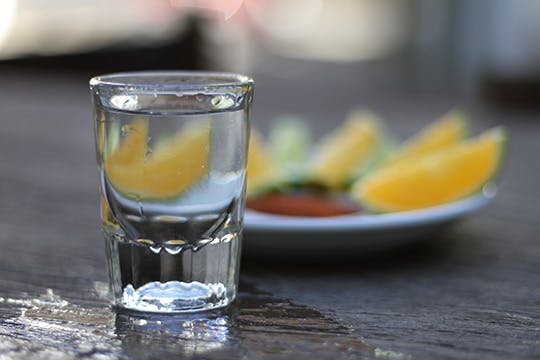The Most Wine-Like Spirit
For those who love wine, or who just want a spirit more connected to a sense of place than a marketing budget, Mezcal is for you.

One of the things that make wine so unique is its ability to transmit terroir to the taster. Terroir is the French concept of a consumable item being imprinted with and then tasting like the place it is from. Spirits as a beverage category are rarely designed with terroir in mind, as they often are mass blended, flavored, or oaked. Mezcal, though, is the major exception.
Mezcal comes from Mexico and is distilled from the agave plant. Tequila is a type of mezcal only made in Jalisco (as well as slivers of the surrounding four states) from a minimum of 51 percent Blue Weber, a specific species of agave. Thanks to Tequila’s soaring popularity, the majority is mass-produced plonk, and like cheap wine won’t say much in terms of terroir. Yet there are now hundreds of artisanal producers from around Mexico crafting terroir-specific Mezcal every bit as nuanced as the finest wines.
The vast majority of wine is made from one grape vine species, vitis vinifera, which has thousands of different varieties like Pinot Noir and Chardonnay. In Mexico there are 136 different species of Agave; some of those species, like Karwinskii, have their own different varieties, like Cuishe, Baicuishe, Madre Cuishe, Barril, Tobaziche, and Verde. Whether a species or variety, each has its own unique character, and that character changes depending on the growing environment.
Ninety percent of Mezcal is made of Espadin (leaving out Blue Weber in Jalisco for Tequila, which makes the vast majority of mezcal); think of it like the Chardonnay of agave; it grows everywhere, with relative ease, and responds well to different production methods to produce generally palatable products. Espadin is popular with growers mostly thanks in equal part to its ease of cultivation as well as its easy-to-drink flavor profile. It matures into large, sugar-filled piñas in only seven years. This may seem like a long time until you compare it to other species like Tobala’s 12 years or Arroqueño’s 25 years.
Espadin also responds to its microclimate and soils, i.e., its terroir. Companies like Agave de Cortes de Familia explore these differences in its Nuestra Soledad series. Each bottling is 100 percent Espadin from one of six different villages. The hot San Luis del Rio produces an agave with higher than average sugar content, making fruitier, richer mezcal, whereas Lachiguí is a super steep, high-elevation village (7,500 feet), making for a much lighter body with cooler, greener, and more mineral flavor profile.
The other types of agave can be exceptionally hard to mass cultivate because of the very specific growing conditions most require. Great strides are being made on this front, with farmers trying to match type to place, in the same way as with certain grapes. Like Nebbiolo, they only thrive in very particular environments.
Those that aren’t farmed are harvested from the wilds of Mexico. They have evolved to survive in their surroundings, highland or low land, arid or humid, forested or desert. This makes each one incredibly unique and nuanced.
At a tasting with my family, none of whom have a trained palate, they recognized and appreciated the differences in 18 different mezcals. Tasting notes spanned from “chocolate chip cookies” (Tobala), to “peanut butter, pineapple, funky cream” (Madrecuixe), to “mineral, funky, fruit” (Barril). Because of it, the only spirit I’ve ever seen any of them drink straight is Mezcal.
Notice how the word smoke isn’t in any of those tasting notes. If you’ve only ever experienced the acrid, poor-quality brands like Vida, it’s time to take another look. For those who love wine, or who just want a spirit more connected to a sense of place than a marketing budget, Mezcal is for you. There are now more types and styles imported to the U.S. than ever before, and the time is ripe to learn and taste something new.

